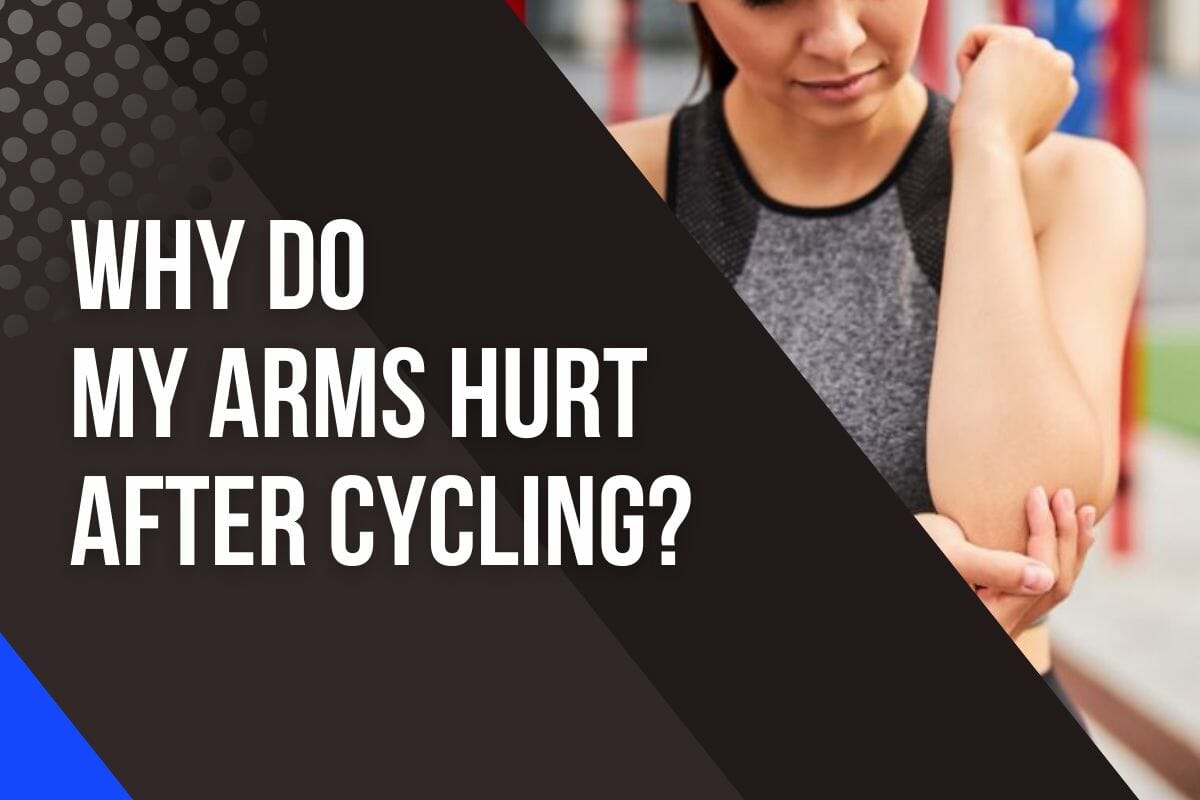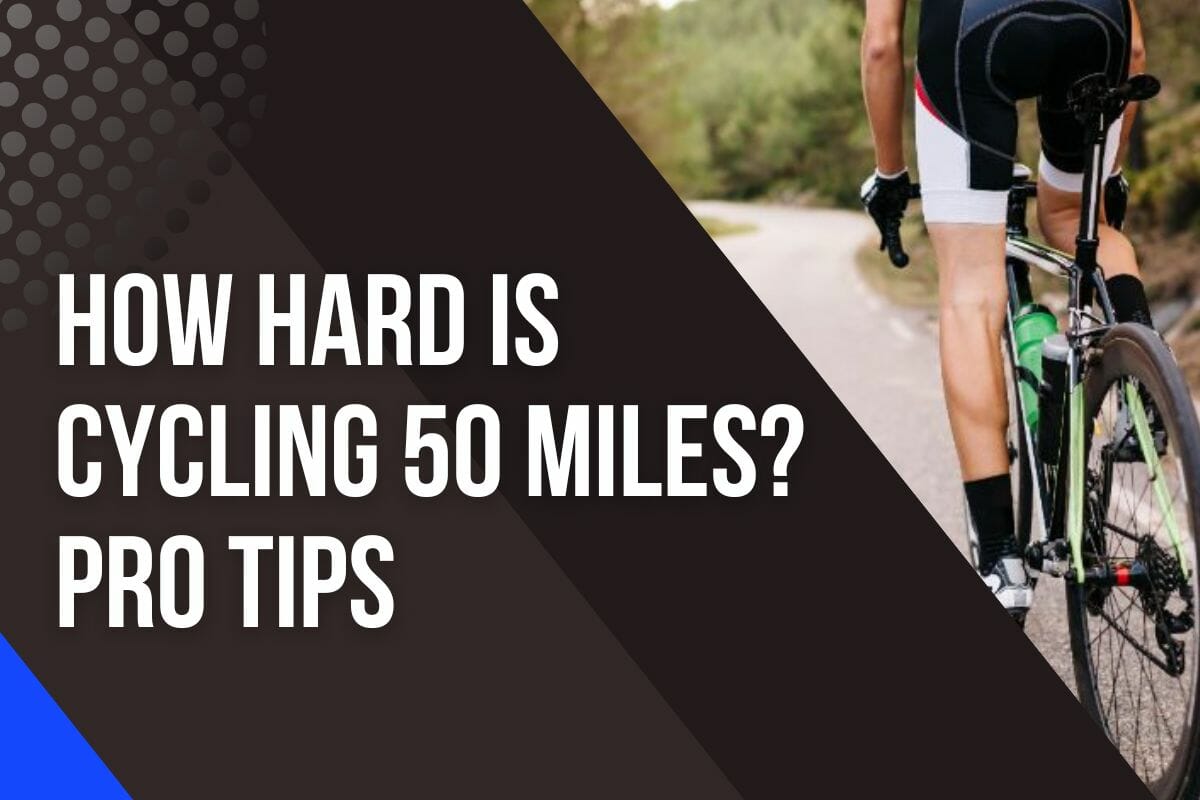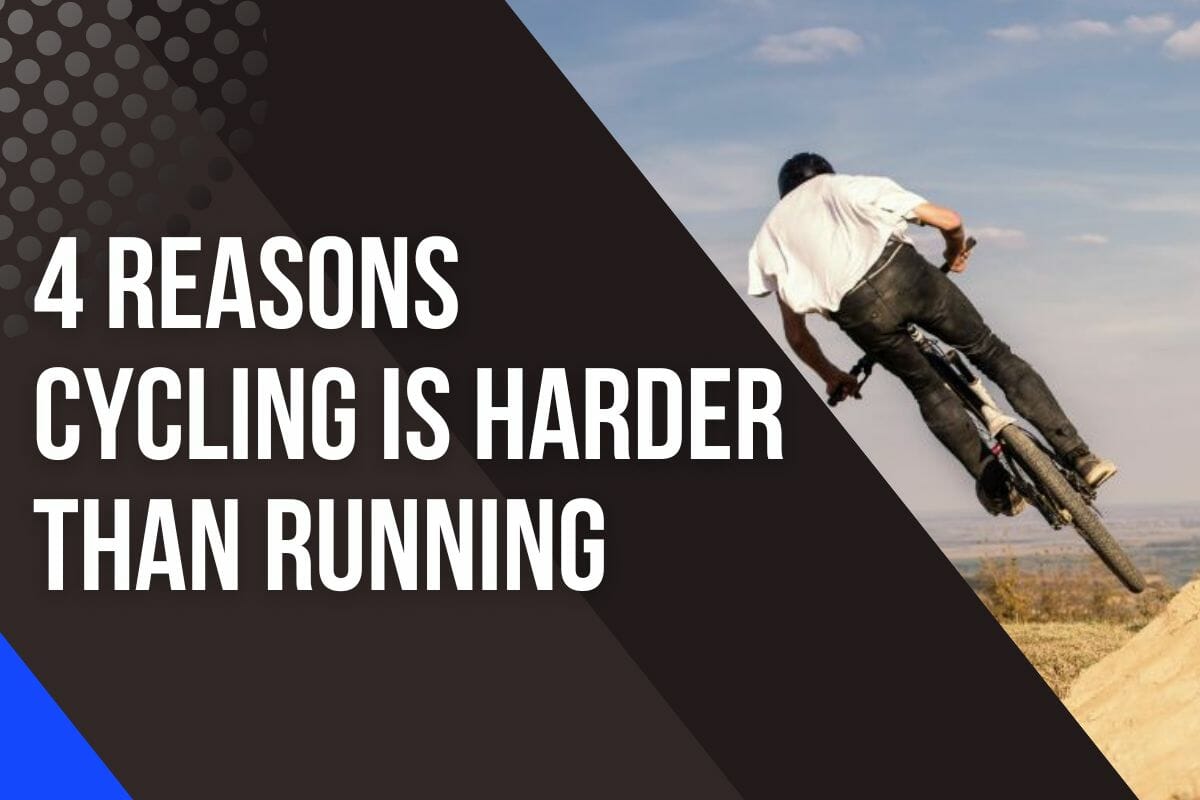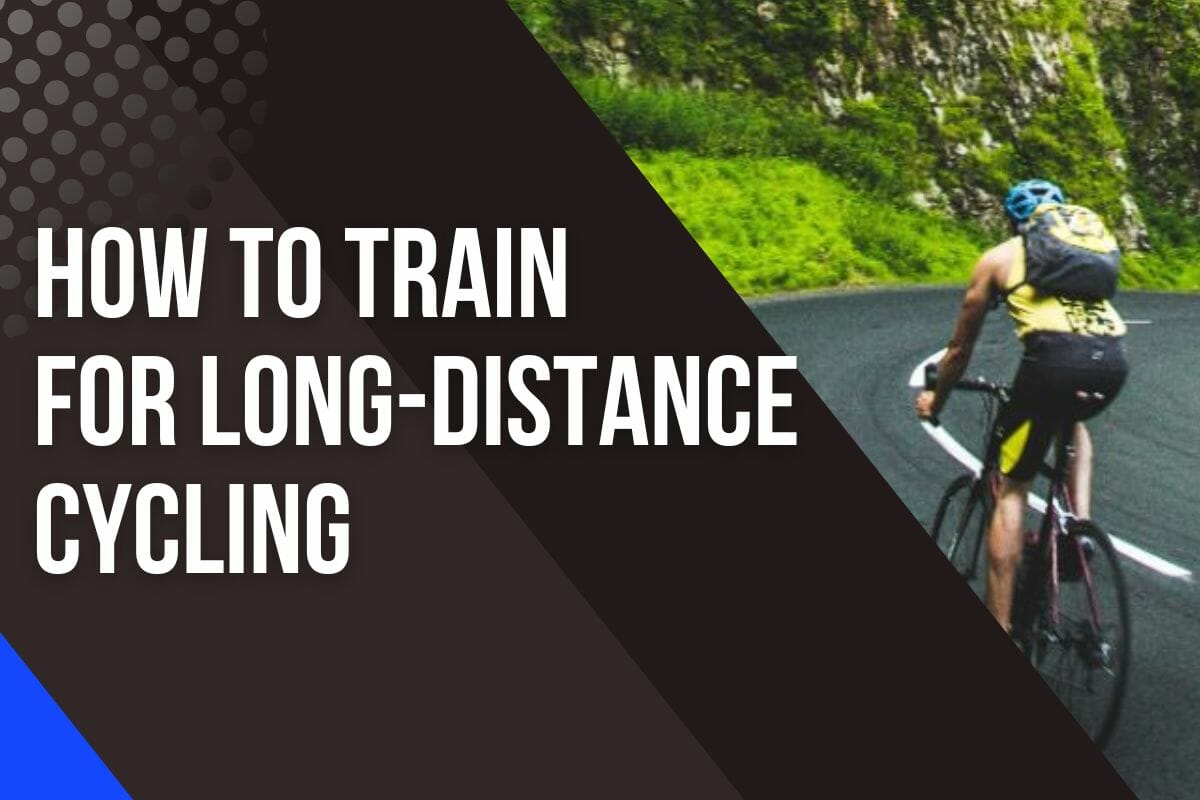Why Do My Arms Hurt After Cycling? Prevention And Treatment

Have you ever wondered why your arms hurt after cycling?
From muscle aches to carpal tunnel syndrome, there are many potential causes that can make your arms feel like they’ve gone through a battle.
Learning about the different conditions associated with cycling can help you find relief and get back on the bike more comfortably.
So let’s begin unraveling the mystery of why your arms hurt after cycling.
Why Do My Arms Hurt After Cycling?
If you’re having trouble with cycling discomfort in your arms, you may be wondering why it’s happening and how to prevent or reduce the soreness.
Knowing what causes this type of pain can help you make changes that will keep your biking arms feeling strong and healthy on each ride.
Below are some common causes.
Muscle Aches
After a good cycling session, it is not unusual for your arms to feel sore and tired.
This type of muscle ache can be caused by a variety of factors that occur during physical exertion.
Muscle soreness, fatigue, cramping, and spasms are all symptoms associated with this type of discomfort.

When engaging in any physical activity there is always the possibility of experiencing some sort of muscle-related pain or injury.
To help avoid this, it is important to warm up prior to exercise.
Warming up will loosen stiff muscles and increase blood flow which helps prevent further damage when exercising at higher intensities.
Stretching before and after each workout will also reduce potential muscular strains and sprains.
Handlebar Palsy
Handlebar palsy, also known as cycling palsy or nerve palsy, is a common complaint among cyclists.
It occurs when the nerves in the wrist become compressed from long periods of time spent on the handlebars.
This compression can cause numbness, pain, and tingling sensations that can extend all the way down to your fingertips.
The symptoms include acute pain, itchiness, tingling, numbness, and weakness in your outer hands and wrists.
Fortunately, there are several steps you can take to prevent this condition from developing.
First, it’s important to make sure you have an ergonomically correct bike setup so that your weight is distributed evenly across both hands.
Taking plenty of breaks during your rides to stretch out your arms and shoulders also helps reduce any pressure on your nerves.
Using padded gloves to reduce shock from uneven terrain will also help.
Carpal Tunnel Syndrome
Carpal tunnel syndrome is a painful condition that can occur in the wrists of cyclists. (1)
It results from an imbalance between muscle tension and nerve compression, leading to pain in the wrist and upper hand.
This type of injury, known as cycling carpal tunnel, is especially common among cyclists due to their repeated use of handlebars and other parts of the bike while riding. (2)
Here are five key points about carpal tunnel syndrome (3):
- Pain located in the wrist or palm area
- Weakness in grip strength
- Tingling sensation (numbness) when cycling
- Nerve damage caused by repetitive movements on handlebars
- Cycling pain relief found through proper bike fit posture
Fortunately, there are some ways to prevent this problem.
Making sure your body is properly aligned with your bicycle will help reduce stress on your hands and arms, as well as reduce any pressure placed on nerves running along your forearm. (4)
Additionally, wearing gloves while cycling provides added cushioning which may help reduce overall friction against your wrists.
If you already have symptoms of carpal tunnel syndrome, it’s important to rest and avoid activities such as cycling until they subside.
You should also consult with a medical professional for additional advice if needed.
Elbow Tendonitis

Elbow tendonitis is an overuse injury caused by gripping objects using the thumb and first 2 fingers that can occur when cycling, golfing, or during other activities. (5)
It’s also known as tennis elbow or golfer’s elbow. In our case, the biker’s elbow.
It’s characterized by pain and soreness in the elbow region, which may worsen if the activity continues. (6)
If you’re experiencing this type of discomfort after a bike ride, it could be a sign of elbow tendonitis.
The main symptom of elbow tendonitis is localized pain at the site of the injured tissue.
This can range from mild to severe and may even radiate down your arm into your hand or wrist area.
You may also experience swelling, tenderness, and reduced mobility with movement due to inflammation caused by elbow tendonitis.
Treating ‘Biker’s Elbow’
Treating ‘biker’s elbow’ requires a comprehensive approach that addresses both the source of the injury and any symptoms present.
Here are four key steps to treating a biker’s elbow: (7)
- Rest: Taking time off from cycling will reduce inflammation in the affected area and give your body a chance to heal itself.
- Ice Therapy: Applying an ice pack for 15 minutes several times per day helps to relieve pain and reduce swelling around the elbow joint.
- Ergonomic Adjustments: Evaluate your bike set-up and make ergonomic adjustments such as changing handlebar reach or stem length if needed. This should help minimize strain on the tendon while you cycle.
- Physical Therapy Exercises: Specific physical therapy exercises may be prescribed by your healthcare provider that targets weakened muscles, improve range of motion, and strengthen damaged tendons in the forearm region associated with ‘biker’s elbow’.
What Muscles Should Be Sore After Cycling?
It’s important to note that everyone experiences post-ride soreness differently.
Some people may find the arms and legs more affected while others might notice greater discomfort in their abdomen or back.
Regardless of where you feel your own post-ride soreness, there are certain muscle groups used during cycling that typically become fatigued and may lead to lingering aches and pains if they’re not properly stretched before and after your ride.
Calf
Calf pain and soreness from cycling is a common problems for cyclists.

Tight calf muscles can cause discomfort, cramping, and fatigue during rides.
Here are four tips to help you reduce the risk of calf problems:
- Warm up your calves before riding. Stretching exercises like heel drops or bent-knee calf stretches will get them ready for the ride ahead.
- Stay hydrated while riding and afterward. Dehydration can lead to tightness in the muscles which can result in painful cramps during and after exercise.
- Take breaks while on long rides to give your calves time to recover between efforts. A few minutes here and there should be enough to keep them loose and relaxed as you continue on with your ride.
- If you experience calf muscle tightness after a ride, do some light stretching or massage the area gently with a foam roller or tennis ball until it feels better.
Thigh
After a long bike ride, I often experience soreness in my thighs.
This is due to the fact that cycling is a high-intensity activity that puts a lot of strain on your quadriceps and other thigh muscles.
When cycling, it’s important to ensure that you maintain proper form and posture in order to avoid overworking your legs.
Make sure to keep your back straight, your shoulders relaxed and your body weight evenly distributed between both legs.

If you find yourself getting fatigued more quickly than usual, then try taking more frequent breaks and stretching again.
Make sure to warm up properly before each ride with dynamic stretches targeting the major muscle groups used when cycling.
Focusing primarily on the glutes, quads, hamstrings, hips, lower back, etc., will ensure these areas remain loose and flexible for better performance.
Buttocks
Sometimes, cycling can leave your buttocks feeling sore and uncomfortable afterward.
This type of pain is usually caused by saddle-related issues such as not having the right kind of bicycle seat cushioning or poorly adjusted saddle height and angle.
If you’re experiencing gluteal pain after cycling, try adjusting the saddle height so that it’s level with your hipbone when sitting on the bike.
You should also make sure there’s enough padding in the seat for comfort – this will reduce friction, which can lead to saddle sores if left untreated.
Additionally, cycling shorts are designed specifically for comfort while riding; they feature extra cushioning at pressure points like your sit bones and provide some protection against chafing from long rides.
Low Back
Low back pain is a common complaint among cyclists.
While cycling, your posture and bike fit can have an enormous impact on the amount of strain you put on your lower back muscles.

Here are four tips to reduce low back discomfort while cycling:
- Make sure that your saddle height is not too high or too low for optimal pedaling efficiency.
- Check if the handlebars are at the correct distance from the saddle for proper spine alignment when reaching out to grab them during rides.
- Adjusting your seat angle slightly more forward will help support good posture without overworking your abdominal muscles.
- Ensure that you have adequate lumbar support in order to keep your core stable and prevent slouching while riding long distances.
Shoulders
Shoulders take a lot of strain during cycling, so it’s no surprise they can be sore after a ride.
Shoulder pain is more common in cyclists who have poor shoulder flexibility and strength.
To reduce the risk of shoulder pain after cycling, you should focus on stretching and strengthening your shoulders before and after riding.
This will help prevent muscle aches and pains when riding for extended periods or over long distances.
You can do simple stretches at home or look up specific exercises designed to target the muscles used during cycling.
For those looking to build up shoulder strength, there are several exercises that riders can do to strengthen their shoulders.
These include push-ups, pull-ups, shoulder presses, lateral raises, and bent-over rows.
All these exercises work the major muscles used while riding such as the deltoids, rotator cuff muscles, trapezius, and rhomboids which will help maintain good posture while cycling and reduce fatigue in the arms afterward.
Neck
Neck pain is not only annoying and uncomfortable, but it can also lead to long-term injuries if not taken care of properly.
Cycling neck can occur due to several factors: bad posture while riding, poor bike fit or too much time spent in one position with the head forward.
This can cause tension or strain in the neck muscles, leading to pain and discomfort.

To prevent this from happening, you need to ensure your body is correctly aligned as you ride.
Make sure your back is straight and your chin isn’t tucked down – sit up tall!
If possible adjust the handlebars so they are level with the seat; this will help reduce neck strain during longer rides.
Before cycling, start off try stretching out the sides of your neck by gently tilting your ear towards each shoulder for 10 seconds then repeating on the other side 3 times total.
You could also perform a gentle chin tuck exercise where you slowly pull your chin down toward your chest while keeping your eyes up and looking ahead – hold this stretch for 15-20 seconds before releasing.
Proper Cycling Posture And Arm Position
Proper cycling posture and arm position are critical for avoiding sore arms after a ride.
It starts with a proper bike fit, which ensures that your body is in the right alignment on the bike.
Then you can focus on how to hold onto the handlebars.
A good grip allows your hands and wrists to move naturally while also providing enough support when needed.
Make sure your elbows are slightly bent, as this helps absorb shock from uneven terrain while also providing stability during turns or hard braking.
Your arm muscles play an important role too.
While gripping the handlebars, be mindful of where tension builds up in your forearms and shoulders – if there’s too much pressure it could lead to fatigue and eventually pain.
To help alleviate strain, practice shifting hand positions periodically throughout your ride. This way you don’t put all the burden on one part of your arm muscles but instead, distribute it more evenly over time.
Foot placement is just as critical for optimal performance.
The ball of your foot should rest directly over the pedal axle; if it’s sitting too far forward or backward, it can cause discomfort or even injury from repetitive stress in that area.
It may take some trial and error to find the most ergonomic arrangement but once found it can make cycling much more enjoyable.
Adjusting the saddle height will ensure correct posture on longer rides by reducing pressure on sensitive areas such as the lower back and hips.
This is especially important because an improper seat adjustment could lead to pain in those areas throughout the ride – ultimately causing discomfort in other parts of your body like your arms after you finish cycling.
If done correctly, these steps should ensure that your arms remain comfortable even after several hours spent on two wheels!
Final Thoughts
The best way to prevent arm pain while cycling is to ride in an ergonomic position, with your arms and wrists supported.
To reduce arm fatigue during a long ride, take regular breaks, stretch regularly, and make sure you have the correct bike fit for your body.
There are also specific exercises that can help strengthen the muscles used in cycling, reducing arm pain after riding.
If you experience any persistent or worsening arm pain after cycling it’s important to see a doctor as soon as possible.
It could be due to an underlying medical condition like carpal tunnel syndrome or something more serious.





